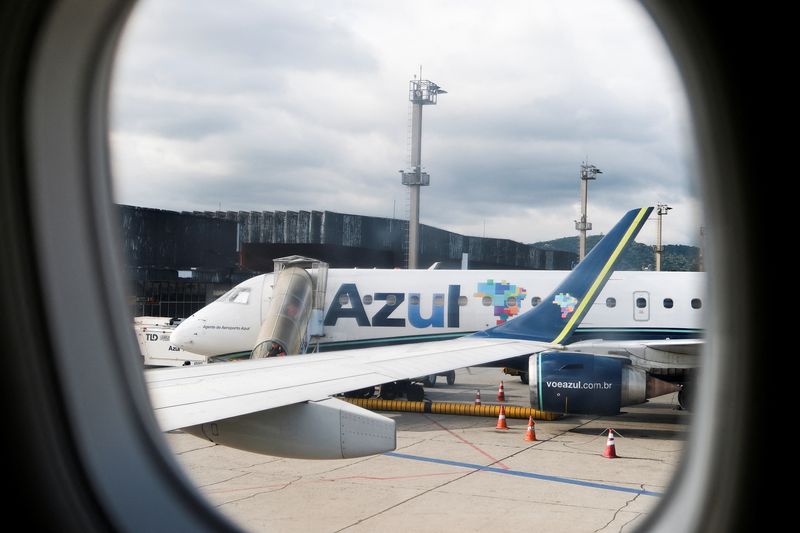By Gabriel Araujo
SAO PAULO (Reuters) – Azul and Gol, two of Brazil’s largest airlines, are moving a step closer to a sweeping merger that would create a dominant carrier in Latin America’s No. 1 economy, a securities filing showed on Wednesday.
The union of the two companies, which follows months of talks and market speculation, would hold roughly 60% of the domestic market, far surpassing the local unit of Chile-based LATAM Airlines (NYSE:LTM).
Azul Chief Executive John Rodgerson said in an interview that the combined carrier, which would continue operating two separate brands despite the combined ownership, would be “a national champion.”
Seeking to rebuff potential competition concerns, Rodgerson pointed to other national carriers with dominant shares in their home markets, including LATAM in Chile, Lufthansa in Germany and IAG in the UK.
“So these other countries understand the importance of having a strong airline that can grow,” he told Reuters. “Especially a strong company which buys local aircraft.”
Azul’s fleet includes regional jets from Brazil’s Embraer as well as Airbus single- and twin-aisle planes, while Gol flies only Boeing (NYSE:BA) 737 aircraft.
He added that the move would allow for larger connectivity and lower cost of capital.
Azul and Abra Group, the majority investor in Gol and Colombia’s Avianca, had been in talks since last year to “explore opportunities,” seeking to strengthen their operations to face challenging times for the industry in the region.
They have now signed a nonbinding memorandum of understanding aimed at combining Azul and Gol, the first of several steps on the path to completing a deal, the securities filing showed.
It also marks the beginning of the process to obtain regulatory approvals for a combination, including from antitrust regulator CADE.
Latin American airlines have been facing financial hurdles in the wake of the COVID-19 pandemic, with most forced to restructure, several in bankruptcy, as they struggle with high debt.
Gol has been under Chapter 11 bankruptcy reorganization in the United States since early 2024, while Azul recently had to strike deals with lessors to scrap obligations in exchange for an equity stake, and with bondholders to obtain fresh financing.
A combination would follow Gol’s exit from bankruptcy proceedings.
Gol earlier in the day released a new five-year strategic plan laying the groundwork for it to exit Chapter 11, which it expects to happen by May.
The combined company, Rodgerson said, would include three board members appointed by Azul, three appointed by Abra, and three independent members. Azul would name the company’s chief executive and Abra its chairman.
Analysts have noted the transaction could be complex as it requires regulatory approvals, but acknowledge that market turbulence, including the sharp depreciation of Brazil’s real in recent months, might have given the deal a boost.
Azul and Gol, which already operate in codeshare, would bet on their complementary networks to obtain antitrust approval, noting that they have approximately 90% complementary and non-overlapping routes.

Gol focuses on big cities such as Sao Paulo, Rio de Janeiro and Brasilia, while Azul has a more dispersed network.
Rodgerson said the carriers’ different fleets would put them in a stronger position to negotiate with lessors, manufacturers and suppliers.



